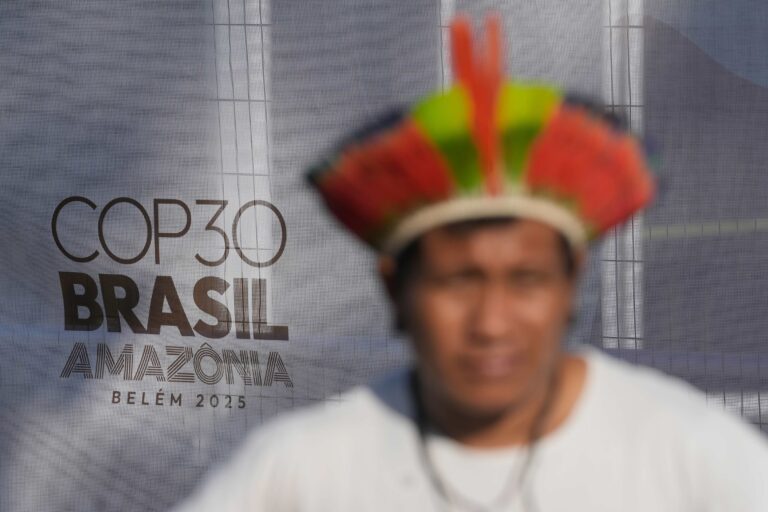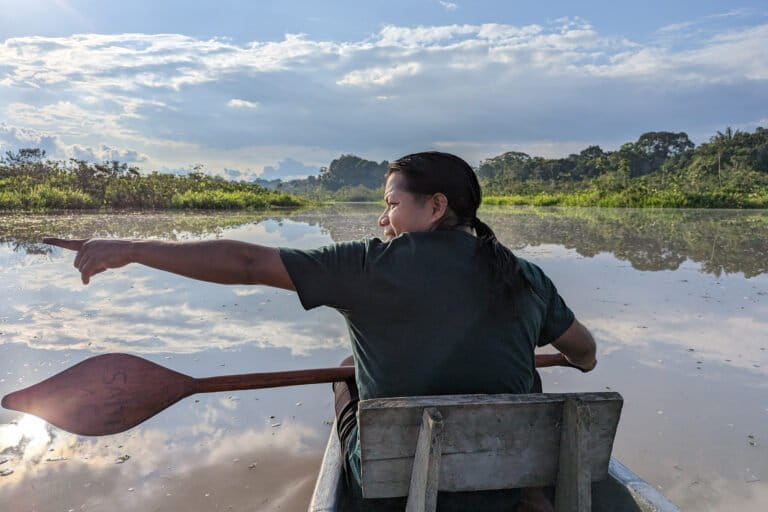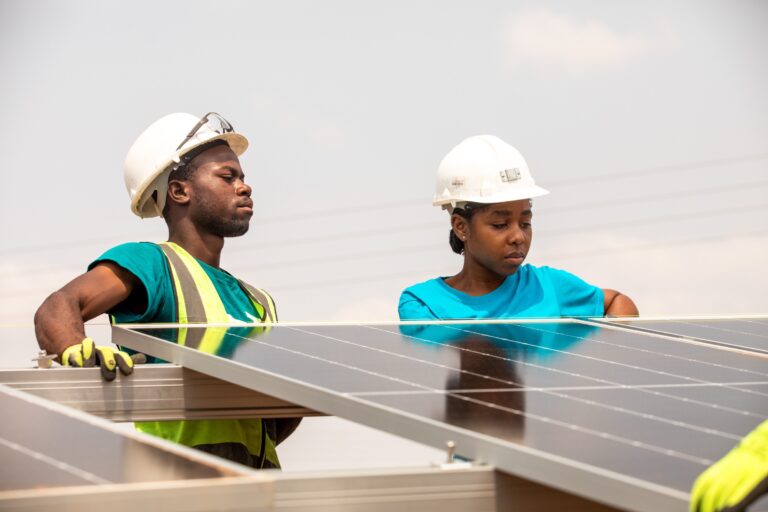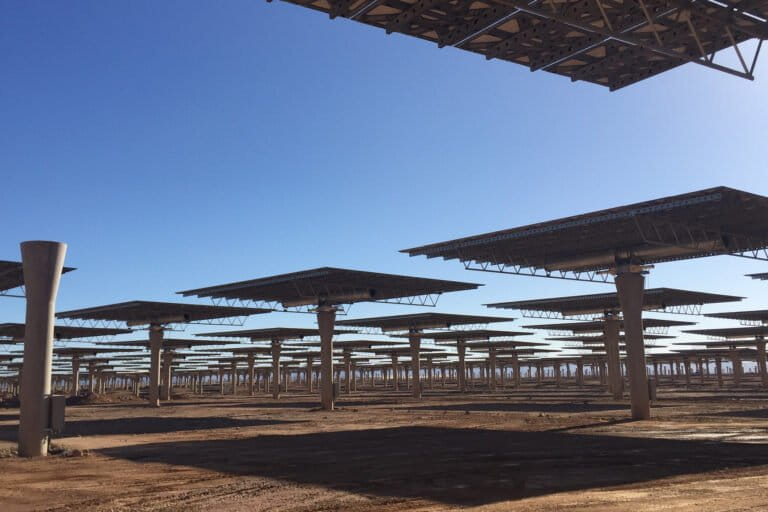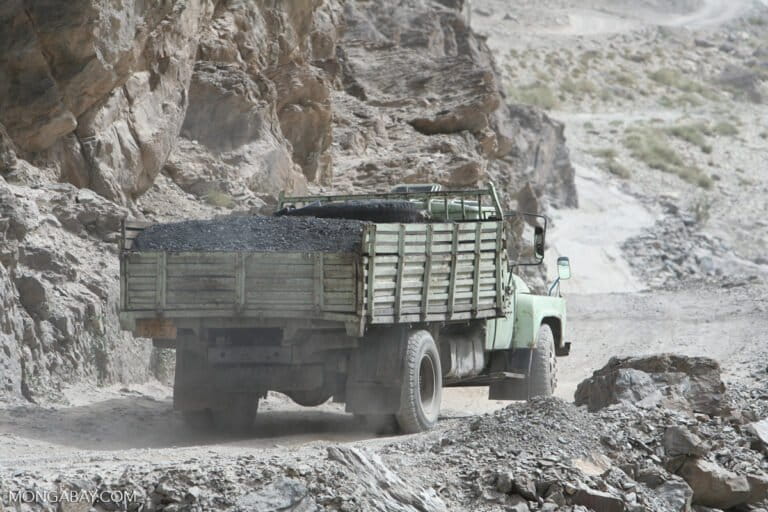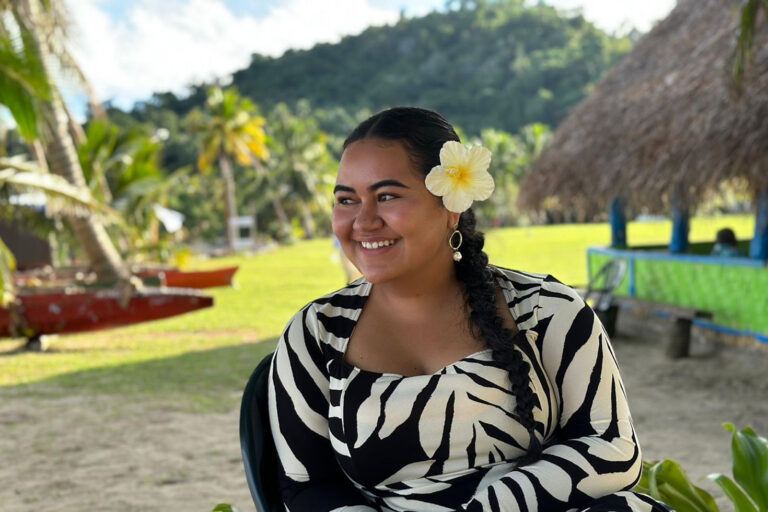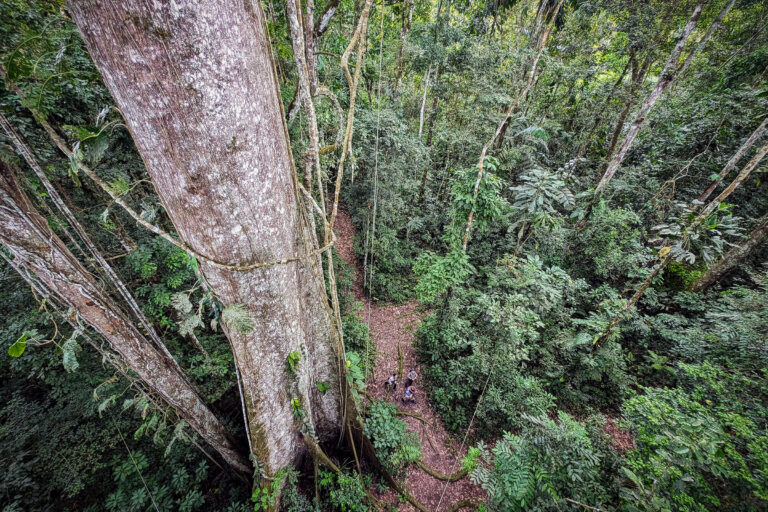- For the first time in Brazil, the killing of an Indigenous land defender is expected to be tried before a federal jury — escalated to that level because of what prosecutors say was an aggression against the entire Guajajara Indigenous community and Indigenous culture.
- Paulo Paulino Guajajara, 26, was killed in an alleged ambush by illegal loggers in the Arariboia Indigenous Territory in November 2019; two people have been indicted to stand trial in the case.
- The impending trial stands out amid a general culture of impunity that has allowed violence against Indigenous individuals and the theft of their land — including the killings of more than 50 Guajajara individuals in the past 20 years — to go unpunished.
- It could also set an important legal precedent for trying those responsible for the recent killings of British journalist Dom Phillips and Brazilian Indigenous rights defender Bruno Pereira.
Three years ago, Indigenous leader Paulo Paulino Guajajara was killed in an alleged ambush by loggers in the Brazilian Amazon. He was a member of the “Guardians of the Forest,” a group of 120 Indigenous Guajajara fighting against illegal logging in the Arariboia Indigenous Territory, in northeastern Maranhão state, often at great personal risk. Despite an intense national and international outcry demanding justice — and government promises at the time to hold the perpetrators accountable — the killers have to date gone unpunished.
The lack of justice in the case appears emblematic of the pattern of impunity for crimes against environmental defenders in Brazil. In the past 20 years, more than 50 Guajajara individuals were killed in Maranhão, with none of the alleged perpetrators ever going on trial, advocates say.
But Paulo Guajajara’s case could break this culture of impunity, according to Indigenous leaders, federal prosecutors and rights groups. That’s because the case is expected to be the first killing of an Indigenous person to be tried before a jury in federal court, potentially also setting a precedent for the assassination of other Indigenous leaders and also for cases like the recent killing of British journalist Dom Phillips and Indigenous rights defender Bruno Pereira in the Vale do Javari region of Amazonas state.

“We had a victory in having managed to take this trial to the jury,” Indigenous chief Olímpio Iwyramu Guajajara, who was the Guardians’ leader until recently, told Mongabay in a phone interview. “I hope that justice will prevail. This issue must be considered, which is a collective struggle. And that the people who murdered both Paulo Paulino Guajajara and also the other [Guajajara leaders] be punished,” he added, audibly emotional. He said they would also make all efforts to bring other cases to justice.
Paulo Guajajara was 26 years old when he was killed in November 2019 in the Arariboia reserve, one of the country’s most threatened Indigenous territories; satellite imagery shows the area as an island of green completely surrounded by a sea of deforestation. Laércio Guajajara, a fellow guardian, was also shot in the incident but was able to escape and survived.
The fact that the killing is now going before a federal jury is hugely significant, advocates say, given the lack of justice for several dozen Guajajara leaders killed in the past.
In Brazil, there have only been a few other cases of alleged homicide that were escalated to the federal jury level on the grounds of a serious violation of human rights. One of them was the 2015 trial of five people accused of the murder of lawyer Manoel Mattos. Mattos was gunned down in Paraíba state in 2009 for his work fighting against vigilante “death squads” operating there. The federal jury convicted two of his killers and sentenced them to more than 20 years in prison.
Alfredo Falcão was a federal prosecutor in the Mattos case and will now be prosecuting the Paulo Guajajara case. He said a jury in federal court is required when determined by law or if a case is escalated from state to federal court.
“The law says that when it involves matters related to Indigenous people, it has to be judged by a federal court,” Falcão told Mongabay by phone. “[Paulo Guajajara’s] case went to [a federal] court because of that. Because the victims had the social role of defenders of the physical, territorial Indigenous community. And, consequently, [they were] also defenders of the Indigenous people in the cultural sense.”
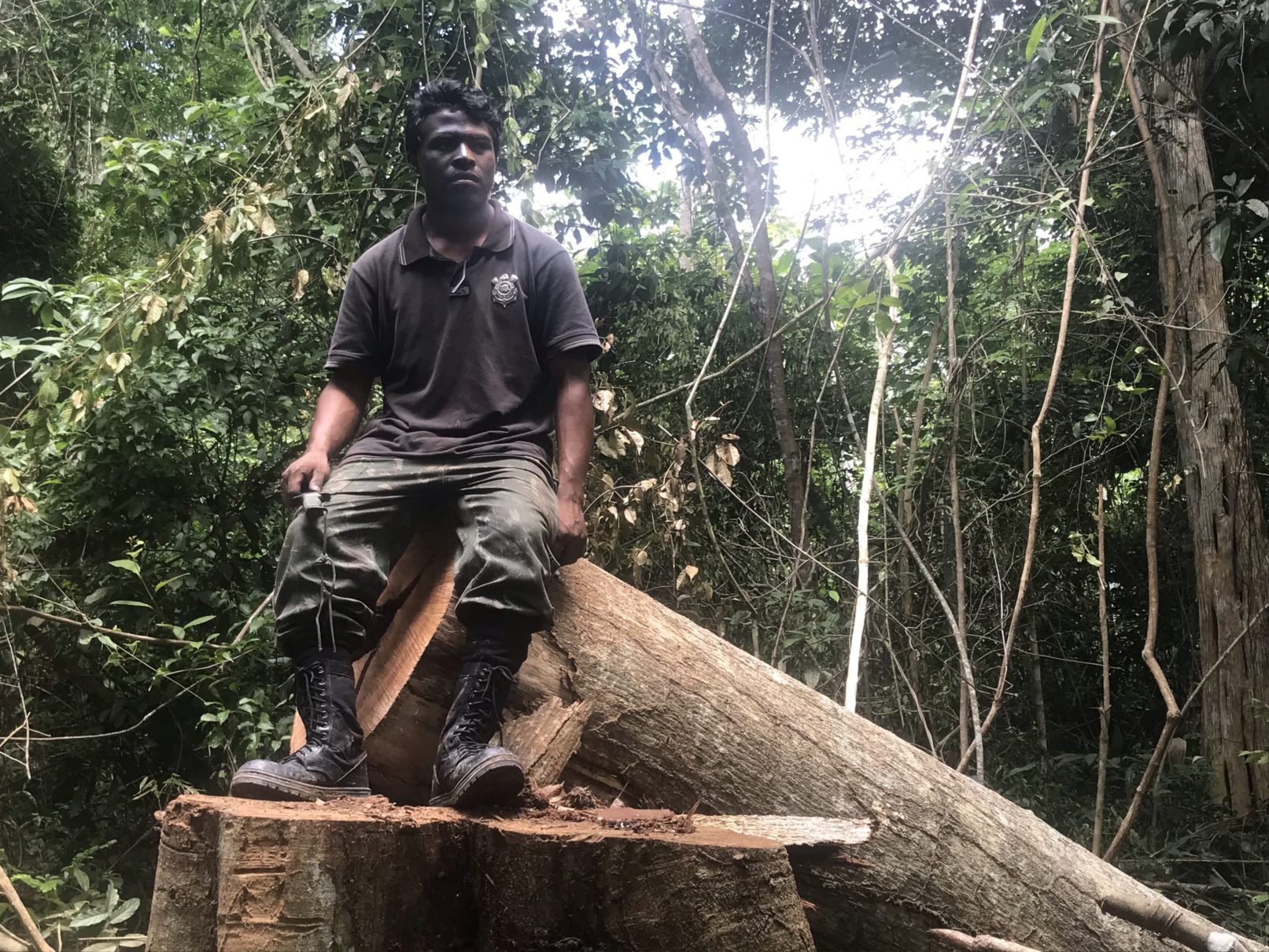
Falcão said the killing of Paulo Guajajara and attempted killing of Laércio Guajajara represented an aggression against the entire Guajajara Indigenous community and Indigenous culture. Prosecutors have commissioned an anthropological report on how these crimes affected the Indigenous community, as part of their case.
The outcome of the trial could also be key to ensuring the survival of the Awá Guajá people, an Indigenous group also living in the Arariboia reserve, who have chosen to remain uncontacted. These hunter-gatherers are considered the most threatened Indigenous group on the planet, according to Survival International, an NGO that advocates for Indigenous protection.
“Of course … the uncontacted Awá in Arariboia don’t know [that] this jury [trial] is to happen, but it is of huge importance to them and their survival,” Sarah Shenker, a campaigner at Survival International, told Mongabay by phone. Without the tireless efforts of the Guajajara guardians like Paulo and Laércio in monitoring the reserve and patrolling against invasions, she added, “the territory would surely be much more destroyed and the uncontacted Awá could well have been wiped out.”
“Without the guardians’ work, who knows if the uncontacted Awá in Arariboia would still be alive?” Shenker said.
Unlike the Awá, the Guajajara of Maranhão have been in contact with outside society since their first recorded encounter with Portuguese colonizers in 1615. Over the centuries, they’ve been subjected to face forced proselytization by missionaries, slavery, infectious diseases, persecution, conflict, and extreme droughts that devastated the land. A branch of the Tupi-Guarani family, they called themselves Tenetehara but in the migration process came to be called the Guajajara in Maranhão; those who went to Pará are today called the Tembé.
This contact with outsiders has come at a devastating cost to the Guajajara community, with several historical cases of massacres, according to Lucimar Carvalho. Carvalho is a lawyer with the Indigenist Missionary Council (CIMI), an advocacy group affiliated with the Catholic Church, and serving as a prosecutors’ assistant in the upcoming trial.
“No cases were tried. No case went to the end,” she told Mongabay by phone. She described Paulo Guajajara’s killing as “an announced death,” given that he was in the process of entering a state protection program. “And even under these conditions, all this happened.”
When this reporter followed the Guardians of the Forest on patrol for a documentary film in January 2019 — the same month Jair Bolsonaro took office as president of Brazil — Paulo Guajajara spoke of the many threats he faced in his work as a guardian, including an ambush in which illegal loggers shot at them, and the lack of support from the authorities.
“[Our work is] very dangerous. One of the guardians has already died. His name is Afonso. The logger killed him and nothing happened. The justice [system] didn’t do anything,” Paulo Guajajara said in the video.
“Close to our village there is a white man who promised to kill me … because I defend the forest … They don’t arrest loggers, but they want to arrest the guardians … We feel very alone here. With no help. We do need a lot of help and support in this land.”
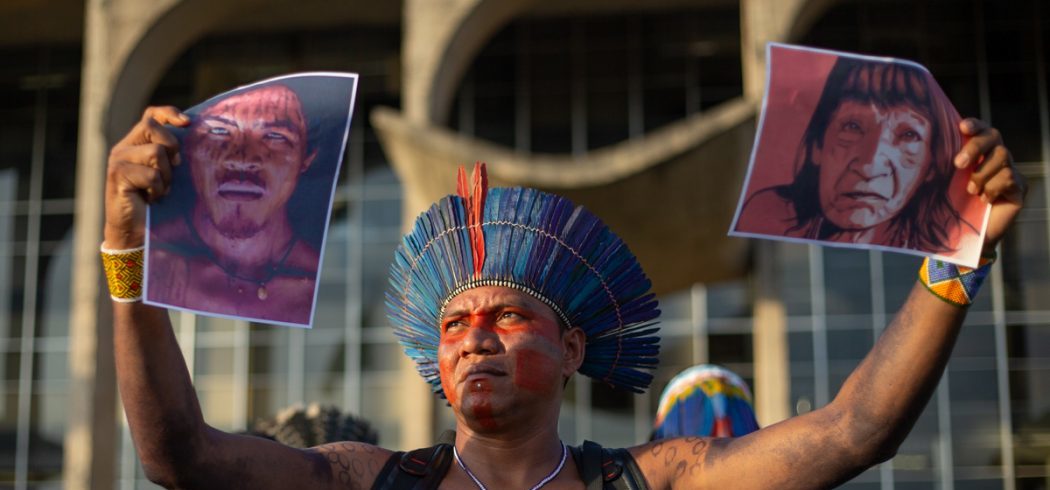
Rising violence
The attack on Paulo and Laércio Guajajara made international headlines because it highlighted the rising tide of violence in the Amazon amid a lack of enforcement to protect Indigenous reserves, as well as the growing vulnerability of native peoples to invaders. The outcry was also a reaction against the government of President Bolsonaro, who has spoken out against Indigenous rights and pushed to open up Indigenous reserves to mining and other exploitative activities.
In 2021, more than 3,000 hectares (7,400 acres) of land were deforested in Indigenous reserves that are home to isolated groups like the Awá, according to Instituto Socioambiental (ISA), a nonprofit that advocates for the rights of Indigenous and traditional peoples. The Araribóia reserve was one of the worst-hit territories, with more than 380 hectares (939 acres) deforested, the data showed.
Along with deforestation, violence against Indigenous communities has also increased under the Bolsonaro administration. Last year, 35 people were killed in land-related conflicts in rural areas, a 75% increase from 2020, according to the Catholic Church-affiliated Pastoral Land Commission (CPT), which has tracked this issue since 1985. There were no convictions in any of those cases, according to the government’s own records. In the Brazilian Amazon, there have been more than 300 deaths related to land conflicts since 2009, according to a report from Human Rights Watch. Of these, just 14 cases — 5% — were brought to court.
“[Paulo’s trial] shouldn’t be a historic moment because, obviously, if the Brazilian law were upheld, then the murderers of all Indigenous people who have been murdered, including the Guajajara guardians, would be in jail. And they’re not,” Survival International’s Shenker said. “And we know that especially now with President Bolsonaro and the war he waged on Indigenous peoples and the ongoing genocide, criminals who invade Indigenous territories and kill Indigenous leaders are rewarded with impunity.”
Neither the Brazilian government nor Funai, the federal agency for Indigenous affairs, responded to Mongabay’s request for comment.

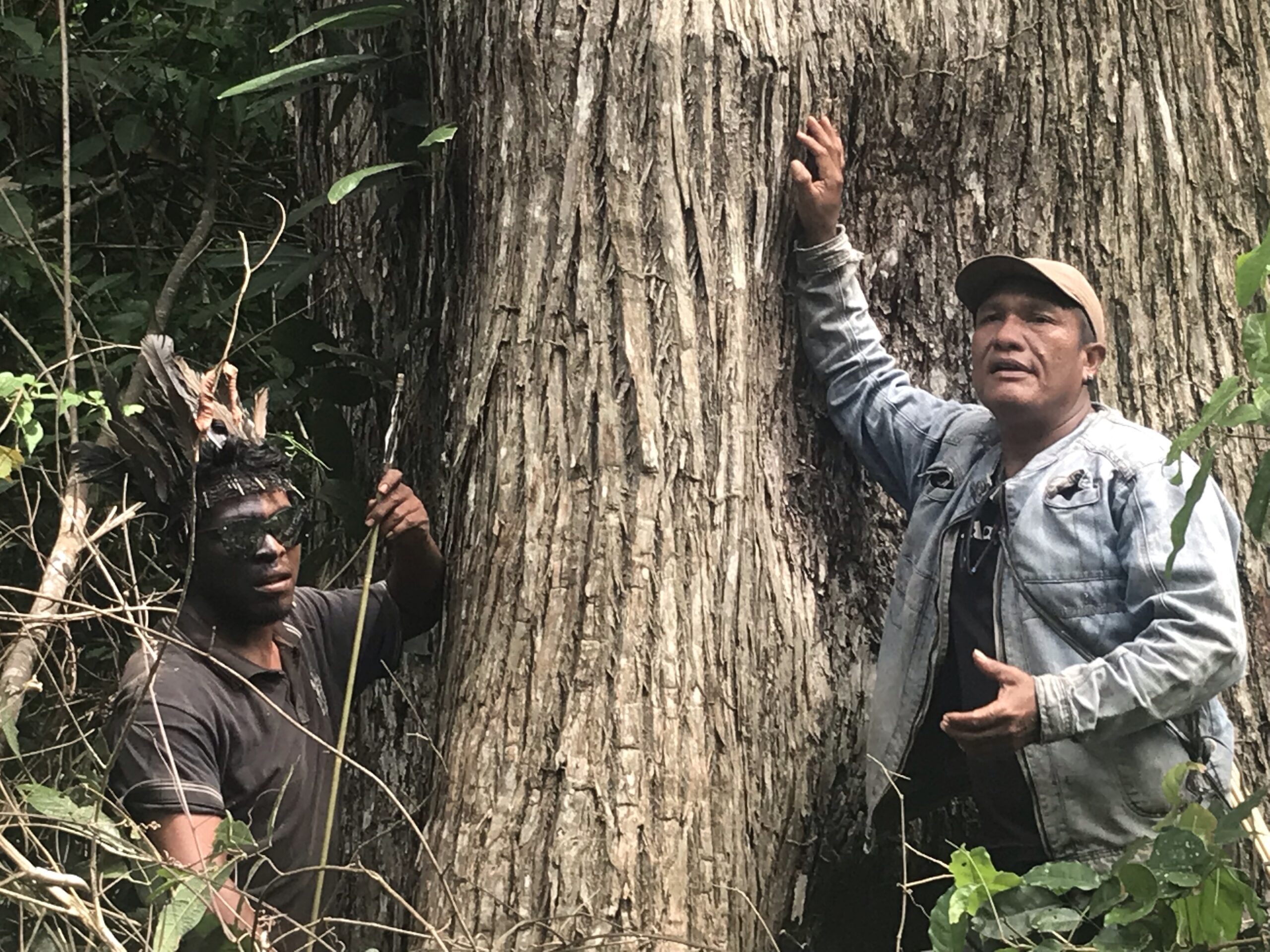
A long legal battle
The years-long fight to bring Paulo Guajajara’s killers to justice has been hampered by what advocates call a racist view of how Indigenous people are supposed to respond to the invasion of their lands.
The two suspects who will go on trial before the federal jury, Antônio Wesley Nascimento Coelho and Raimundo Nonato Ferreira de Sousa, have long argued they were the ones who were attacked by the Guardians of the Forest as they sought to hunt game in the Arariboia reserve to feed their families.
According to the Federal Public Defender’s Office (DPU), representing Sousa, the defendants shot at Paulo and Laércio Guajajara after coming under fire themselves. Paulo’s death, they argued, arose from a “disagreement resulting from an isolated act of two Indigenous people, who, abusing prerogatives that were not conferred on them by anyone, committed crimes against the accused and the other members of the group, as self-styled ‘Guardians of the Forest.’” This, the DPU said, should relegate the killing to a “common” crime tried in a state court. A judge rejected this line of reasoning and indicted the defendants, ruling there was “no doubt about the material existence of the violent clash resulting from intentional death.” That paved the way for the federal trial.

Carvalho from CIMI agreed that the defendants’ argument contradicts both the Brazilian Constitution and international jurisprudence, which guarantee Indigenous peoples’ autonomy and self-determination within their territory. Yet the Indigenous guardians’ very act of defending their territory has been criminalized by legal authorities in Brazil in several instances, she said, including the DPU framing them as a militia.
“That for us is extremely serious,” Carvalho said. “You end up observing that it is a structural racism within the practices of Indigenous peoples in their territorial autonomy … We end up realizing how much this discourse of criminalization of the ways that Indigenous peoples organize [and] articulate [themselves] and defend their territory is seen in an extremely prejudiced, discriminatory, even racist, criminal way.”
In an emailed response to Mongabay’s request for comment, the DPU said it was “impracticable” to provide further information on the case. “This is a very sensitive matter and there are risks that the exposure of data in the case will harm precisely those people who are counting on the Federal Public Defender’s Office to protect them.”

Setting a legal precedent
Indigenous leaders and advocates of Indigenous rights are pressuring for a speedy resolution to the case, which will be heard by the Federal Circuit Court for the First Region in Brasília.
“It’ll be a historic moment when the case is taken to a jury,” Shenker said. “Any delays on that, of course, are worrying because the Guajajara, the guardians, are rightly appealing for the killers of Paulo to be put behind bars as soon as possible. It’s already taken far too long.”
Carvalho said the ongoing public pressure for the trial to get underway is key to preventing the impunity that most cases end in. “If you don’t do something coordinated, time goes by … and these murders, this violence committed, become natural and impunity prevails.”
Falcão, the prosecutor, said he’s confident of the case against the accused. “There is a high probability that the people whom we consider perpetrators actually are.”
That’s why the case being heard before a federal jury is so important, he said. “It only goes to the jury when it involves crime against life,” Falcão said. “As long as the jurors feel safe to judge, that they don’t consider that their life will be threatened before, during or after, I think they are the best judges, especially for those cases that have a very strong cultural and social repercussion.”

The trial is also expected to set a precedent for trying those responsible for the killings in June this year of journalist Dom Phillips and Indigenous rights defender Bruno Pereira in the Vale do Javari region of Amazonas state.
For environmental defenders, these cases are all connected. “The root of the killing of Bruno and Dom is the same thing as the root of the killing of Paulo, which is the government’s failure to uphold the law, to uphold its constitutional obligation and international law as well to keep invaders outside of uncontacted tribes’ territories,” Shenker said. “The genocide the Brazilian government is currently promoting in Brazil is the root of these murders and others as well.”
Olímpio Guajajara said Pereira had been scheduled to visit the Arariboia reserve for the first time in July to train the Guardians of the Forest. He was to have shared with the Guajajara the experiences learned from the Indigenous communities of the Vale do Javari in defending their lands. “The brutes didn’t allow him to come,” Olímpio Guajajara said, “but he [and Phillips] weren’t destroyed.”
Pereira was also featured in the documentary film co-directed by this reporter. At the time, he was the head of isolated Indigenous groups at Funai and spoke about the risks the guardians faced defending their land. “It’s an extremely violent region,” he said in the video. “It’s better to look to the courts to force the federal government to do its job. But the results aren’t great. The land continues to be devasted. We have satellite imagery showing how much timber has been taken from these lands and it’s absurd there isn’t a proper response to this situation. The government is really failing there.”
Olímpio Guajajara himself has been subjected to death threats for many years. “I’m very targeted. Last month, there were some people after me inside the territory. But they couldn’t find me,” he said. He attributes the hostility to his work as one of the Guardians of the Forest, and says it comes from both illegal loggers and farmers in the surrounding region.
The Indigenous chief was included in a protection program by the Maranhão state government following Paulo Guajajara’s killing, but he said nothing has changed since then. “The program won’t protect me from ambush. It has no security on the part of state protection,” he said. “There should be security 24 hours with me.”
The Maranhão state government did not respond to requests for comment.

Despite all the odds against them, Olímpio Guajajara said he and the Guardians of the Forest continue to defend their territory and seek support to keep fighting environmental crimes in Arariboia. Three years after Paulo Guajajara’s killing, he said, they have finally set up an association to receive donations aimed at protecting the Arariboia Indigenous Territory, called Ka’aiwar Indigenous Association of Forest Guardians of Arariboia Indigenous Territory. Ka’aiwar in their Guajajara language means “The People of the Forest.”
“We have to get organized among ourselves and set up self-defense strategies for our territories,” Olímpio Guajajara said. “Because those people who are badmouthing the guardians, who don’t come to our defense, it’s because they are complicit in mistakes.”
Banner image: “Guardians of the Forest” Paulo Paulino Guajajara, left, and Laércio Guajajara, right, pose for a photo before going on patrol in the Arariboia Indigenous Territory, in Maranhão state, on Jan 30, 2019. Image by Karla Mendes/Mongabay.
Karla Mendes is a staff contributing editor for Mongabay in Brazil. Find her on Twitter: @karlamendes
FEEDBACK: Use this form to send a message to the author of this post. If you want to post a public comment, you can do that at the bottom of the page.







